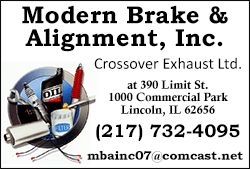 Sheffield found that public employees — who enjoy costly pension guarantees and
other expensive perks — typically have more education and higher income than the
average American worker. Sheffield found that public employees — who enjoy costly pension guarantees and
other expensive perks — typically have more education and higher income than the
average American worker.
“Government employee unions create a more expensive and protected class of
workers at the expense of nonunion workers, students, and taxpayers,” Sheffield
wrote.
The trend has gotten worse as public employee unions’ increasing influence has
emboldened union bosses “to become more directly involved in politics and more
radical in their demands,” she explained.
Public employee unions funnel taxpayer money to politicians who cycle more
taxpayer money to the unions by helping squeeze taxpayers for pay and benefit
increases, threatening access to public services if union demands aren’t met.
Union bosses point to generous compensation in the highly-unionized public
sector as proof unions are good for all workers. But most employers don’t have
monopoly power over customers who are forced to pay.

“Private unions are more affected by the forces of the free economy, unlike
government unions,” Sheffield said in an email to Watchdog.
Public employee unions, she said, hurt the people who pay for and rely on public
services by increasing costs and red tape at all levels of government. She
pointed to teachers union opposition to merit pay and school choice as one
example.
“This hurts young students, trapped inside classrooms run by less-qualified
teachers — a scenario that happens more often with students from disadvantaged
socioeconomic backgrounds,” Sheffield said.
“Younger employees are disincentivized from innovating and taking risks,” she
added, “And members of the general public are not protected from strikes and
government shutdowns, despite paying taxes to hire these workers.”
It hasn’t always been this way. Until the late 20th century, America’s labor
unions represented a primarily blue-collar movement of private-industry workers.

[to top of second column] |

By the 1990s, most union members were
white-collar workers. Public employee union members have outnumbered
private-sector union members since 2009, with membership
concentrated in states with sky-high taxes and bloated public
pension obligations.
All four of America’s largest labor unions are predominantly or
entirely focused on public-sector workers. Membership in the top
four, as reported to the U.S. Department of Labor, is listed below.
National Education Association: 2,963,121 members as of Aug. 31,
2014
Service Employees International Union: 1,893,775 members as of Dec.
31, 2014
American Federation of Teachers: 1,597,140 members as of June 30,
2014
American Federation of State, County and Municipal Employees:
1,337,126 members as of Dec. 31, 2014
“It is impossible to bargain collectively with the government,”
George Meany, longtime president of union coalition AFL-CIO, said 60
years ago. Today, AFL-CIO’s agenda is set by coalition members AFT
and AFSCME.
AFL-CIO failed to respond to a request for comment.
Reforming public employee unions is possible, Sheffield told
Watchdog, citing Wisconsin Gov. Scott Walker’s Act 10. She suggested
Worker’s Choice, a proposal from F. Vincent Vernuccio of the
free-market Mackinac Center, could serve as a national model.

Government unions have a typically symbiotic relationship with the
Democratic Party, but public pension reform measures in Rhode Island
and San Jose have passed with support from Republicans and Democrats
alike.
That’s not to say unions will stop fighting any effort to restore
balance between public-sector and private-sector workers. Public
employee union bosses have shown they’re willing to spend millions
of dollars of members’ money to protect their own power.
Public employee unions dominate the list of top federal campaign
contributors maintained by The Center for Responsive Politics. SEIU,
AFSCME, NEA and AFT are all in the top six — and have spent even
more on super PACs, activist groups, think tanks and state issue
campaigns.
Click here to respond to the editor about this article
|